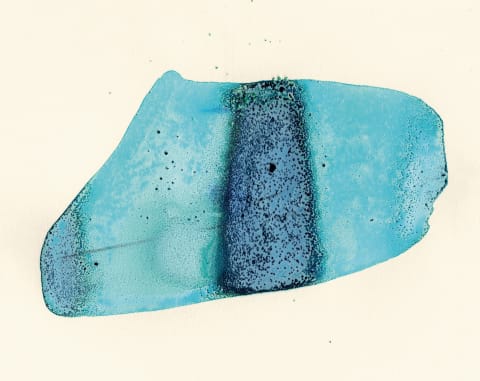Advertisement
How To Make Ink From Foraged Plants & Objects — AKA Our New Go-To Fall Activity

This story is excerpted from the new book Make Ink: A Forager's Guide to Natural Inkmaking by Jason Logan, published by Abrams.
I am often asked what exactly ink is. It's not paint—which is a liquid color used mainly for creating images or covering surfaces. What distinguishes ink from other art supplies is its use as a tool for communication. People have been leaving marks with berries, burnt sticks, or colored rocks since the dawn of humanity—but the use of ink as a transmitter of language can be traced back to the first evidence of civilization in China and Mesopotamia: most often on shards of pottery, featuring markings that historians say were at first mostly accounting ledgers. Gaining the ability to permanently mark symbols on a flat surface meant that ideas could be saved, transported, and shared. Recipes, mathematical formulas, banking, poetry, music, diagrams, history, philosophy, and stories are inseparable from the history of ink.
In my experience, inkmaking is easiest when you are patient and remain open to everything. Some of the most interesting effects of handmade inkmaking happen when the unexpected happens. Wherever it takes you, the ink you make yourself can only be your own color. Follow your instincts. There is no wrong path.
While recognizing the importance of historical printing inks, and ballpoint and fountain pens, my book Make Ink offers a method and a set of tools to make your own water-based wild inks that are best used with a dip pen or a brush, and demonstrates what those inks look like on paper.
How to make blue ink using copper oxide.

Copper can be found almost anywhere in a city. Pennies, copper wire, copper wool, or copper wire sponges (available from most hardware stores) are all great sources. I sometimes buy "copper chop," an industrial recycling product found deep in suburban industrial parks (check your local Yellow Pages).
Materials
- glass jar
- ½ cup (600 g) copper scraps
- 2 cups (480 mL) white vinegar, plus more
- 1 tablespoon salt
- spoon or stir stick
- strainer
- glass containers with tightfitting lids
- rubber gloves
Method
- In a large glass jar, cover the copper with vinegar until fully submerged. Add the salt.
- Leave the mixture in a well-ventilated area, uncovered, away from pets and kids, for 1 to 3 weeks, until you have a rich, blue-colored liquid. Stir twice a day, adding more vinegar as the liquid evaporates to keep the copper pieces fully covered.
- Once the desired hue has been reached, strain the ink and pour into individual glass containers with tightfitting lids. The color may separate into a transparent darker blue and a lighter milkier liquid. Shaken together, these will form a beautiful drawing ink.
Tips for making art with copper oxide ink.
Salt acts as a catalyst for the oxidation of copper. It also causes copper ink to form crystals on paper. This is an ink that will destroy a metal pen nib but that looks beautiful brushed onto paper, with many variations and textures. The fun here is in experimentation. When it comes to color pairing, I love the turquoise blue of copper oxide ink with a glossy black India ink. It also pairs well with wild grape ink or a light wash of black walnut ink (both recipes are featured in the book). The most intense source of natural blue is indigo, which makes a beautiful ink if you can find it. Cornflowers, black beans, woad, mulberries, blueberries, or wild grape juice with baking soda added to it are less permanent and less intense but easier to deal with.
Important safety note: Use rubber gloves while following this recipe, and work in a well-ventilated area. Keep both ink-in-progress and finished ink out of the reach of children and pets.
Watch Next
Enjoy some of our favorite clips from classes
Enjoy some of our favorite clips from classes
What Is Meditation?
Mindfulness/Spirituality | Light Watkins
Box Breathing
Mindfulness/Spirituality | Gwen Dittmar
What Breathwork Can Address
Mindfulness/Spirituality | Gwen Dittmar
The 8 Limbs of Yoga - What is Asana?
Yoga | Caley Alyssa
Two Standing Postures to Open Up Tight Hips
Yoga | Caley Alyssa
How Plants Can Optimize Athletic Performance
Nutrition | Rich Roll
What to Eat Before a Workout
Nutrition | Rich Roll
How Ayurveda Helps Us Navigate Modern Life
Nutrition | Sahara Rose
Messages About Love & Relationships
Love & Relationships | Esther Perel
Love Languages
Love & Relationships | Esther Perel

















